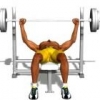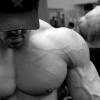Treino de 3dias seguidos
-
Quem Está Navegando 0 membros estão online
- Nenhum usuário registrado visualizando esta página.
-
Conteúdo Similar
-
- 5 respostas
- 842 visualizações
-
- 2 respostas
- 285 visualizações
-
- 1 resposta
- 368 visualizações
-





Posts Recomendados
Crie uma conta ou entre para comentar
Você precisar ser um membro para fazer um comentário
Criar uma conta
Crie uma nova conta em nossa comunidade. É fácil!
Crie uma nova contaEntrar
Já tem uma conta? Faça o login.
Entrar Agora